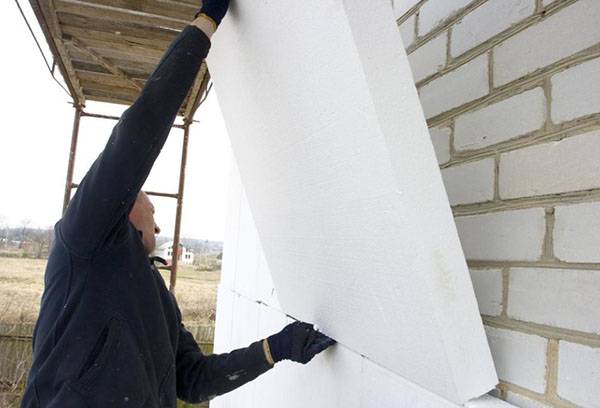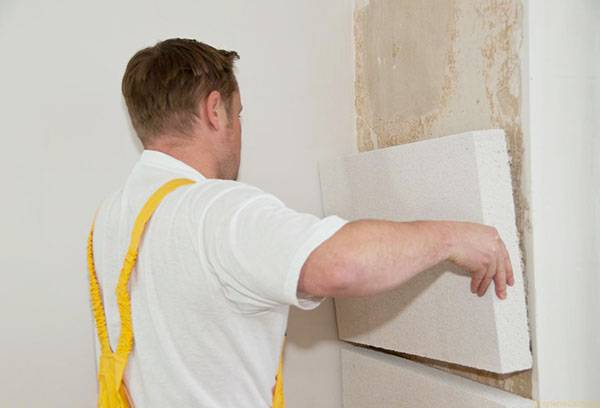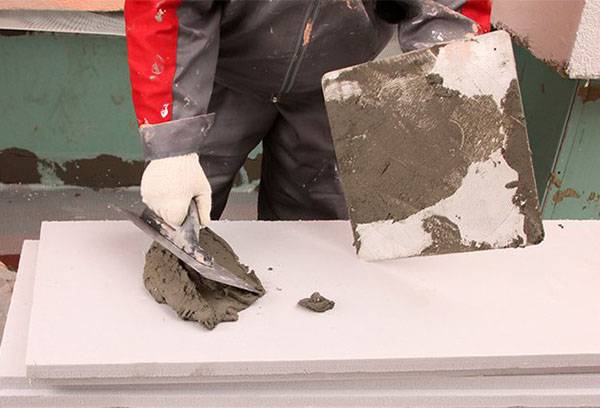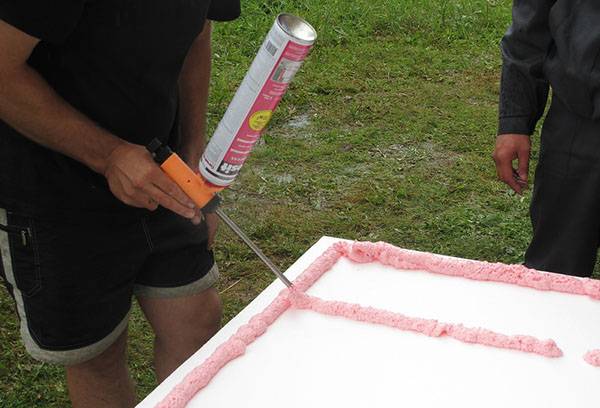How to choose glue for foam plastic and use it correctly?
During construction and renovation work, it is often necessary to choose adhesive for foam plastic to connect porous blocks to each other or secure them to a structure made of another material. The positive qualities of expanded polystyrene, as polystyrene foam is sometimes called - lightness, sound insulation, the ability to retain heat well in a room - arise due to the fact that the bulk of the material consists of air bubbles enclosed in a thin polymer shell. In order for foam boards to adhere well to the base, a composition is needed that creates high adhesion between surfaces.
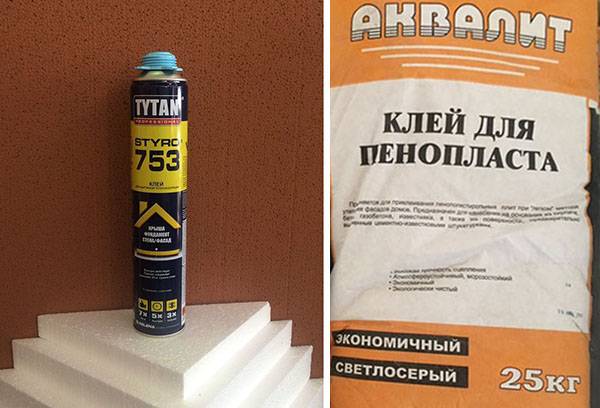
Types and brands of adhesives
Compositions for gluing foam plastic come in two types: dry mixtures and ready-made solutions. If you choose the first option, you will have to dilute the foam glue yourself before work. When purchasing, immediately think about whether you will install reinforcing mesh on the blocks. A special mixture will need to be applied on top of it, and it is advisable that both materials be produced by the same company. Dry polystyrene foam adhesive can be used on any surface except concrete and metal.
Ready-made compositions include mounting adhesive foam. It is easy to use and applied quickly, but you may need a special mounting gun to work. The tool is not cheap, but after installing the blocks it will be useful for other work. For connections that do not require high strength, PVA and liquid nails can be used.Ready-made compositions do not require preliminary dilution; they can be immediately applied to the surfaces to be bonded.
If you need different types of glue for your work, it is advisable to purchase all materials from the same manufacturer. Many companies produce lines of adhesive compositions: you can buy foam, dry and reinforcing mixtures from the Cerisit brand. You can purchase products from other companies.
- "Knauf Klebespatel" – a dry mixture, the solution of which is suitable for both gluing and reinforcement.
- Tytan Professional – Polish foam adhesive, which sets very quickly; anchors can be driven in 2 hours after installation.
- Kreisel – glue and reinforcing mixture.
- "Moment" – a universal mixture, used both as an adhesive and as a coating for reinforcing mesh.
- Master Termol for gluing, Master Super for reinforcement.
Advice
When choosing glue for foam plastic, make sure that the composition does not contain solvents. Acetone, gasoline and similar compounds can react with the plastic and disrupt the smooth surface of the block.
Exterior adhesive
Dry mixtures are more suitable for insulating facades. See the information on the packaging, it should indicate that the glue is suitable for outdoor use. Only cement-based compounds can be used outdoors; gypsum will not withstand high humidity. If done well, a structure with such glue can last more than 30 years. When purchasing, pay attention to the production date. The shelf life of the dry mixture is 1 year, but for the facade it is better to take products produced no earlier than 3-4 months ago. The bag must be clean, without traces of moisture.
Polyurethane adhesive foam is well suited for external surfaces.This composition will secure the foam well on surfaces made of any materials: wood, metal, concrete, plastic. After application, let the glue dry for about 10 minutes, and then firmly press the block to the existing structure, hold for about a minute and you can release. Seal all cracks and voids between the slabs with the same compound.
Polystyrene foam is not afraid of moisture or cold, but it is fragile and deteriorates from the ultraviolet rays of the sun. The laid blocks must be protected with a reinforcing mesh and covered with a special adhesive mixture. In this form, the facade will not collapse; you can leave it unfinished or plaster and paint it.
Compositions for interior work
To glue foam plastic indoors, you can use dry mixtures - both cement and gypsum based. Polyurethane foam compounds will secure the material well. Polyurethane foam for fixing polystyrene foam is undesirable either outside or inside the building. When it dries, it shrinks, the fragile tile may crack, and the whole job will have to start all over again.
If you need to glue the foam to a small surface, you can use double-sided tape. Indoors, such a connection will be quite strong, but over a large area the price of the material will be too high. In apartments where the air temperature is always above zero and there is no high humidity, you can use PVA glue.
Polystyrene foam does not allow air to pass through, so it is impossible to completely cover residential premises with this material. Make thermal insulation on the outer wall, protect the surface adjacent to noisy neighbors from noise. You can install several decorative elements made of polystyrene foam; they serve as an excellent interior decoration.Leave the remaining walls free, let the room “breathe”.
When working inside an apartment, do not use materials that release harmful compounds into the air. If the packaging does not say whether the composition can be used for residential premises, it is better to refuse the purchase. If you want to use universal glue to secure small decorative elements, see if the packaging indicates that this composition can be used to glue polystyrene foam. Do not try to prepare a fixing solution yourself according to a recipe you read on a construction site. You may be happy with the result at first, but then the slab may begin to deform or fall off.
How to use glue correctly?
Dry mixtures must be prepared immediately before starting work; they cannot be stored for a long time. The amount of water for diluting 1 kg or 1 bag of the substance is indicated on the packaging. Usually the solution is stirred, allowed to sit for a few minutes and stirred again. Some manufacturers may give other recommendations; carefully read the instructions for each new material. It is advisable not to mix the composition by hand, but to use a drill attachment or a mixer. When working, make sure that the blades are completely immersed in the solution and do not capture air: bubbles significantly reduce the strength of the connection.
Clean and level the surfaces to be bonded. If fungus or mold has settled on the structures, remove them with a brush and treat the affected areas with fungicides. Fill all potholes, cracks, and chips with mortar and putty. The more thoroughly the preparation is carried out, the stronger the connection will be. Manufacturers of some mixtures recommend slightly moistening the surface beforehand.The manufacturer may recommend other tricks; carefully read the instructions on the package.
Advice
It is advisable to pre-glue metal surfaces with burlap; it is easier to attach foam blocks to it.
Sometimes a combined technique is used to obtain a durable connection: 2/3 of the surface is covered in several areas with a solution of a dry mixture or polyurethane foam, and liquid nails are applied to the remaining areas. This glue alone will not provide good fixation; it can only be used for gluing small fragments. The advantage of the technique is that liquid nails set very quickly and will hold the slab in the desired position while the base composition hardens.
Consumption of different types of glue per 1 m2 surfaces
When purchasing any building material, you should not rely on the consumption indicated on the packaging. Much depends on the condition of the surfaces and the qualifications of the worker. An experienced master will dilute the required amount of solution, apply it in a thin layer, not leave a drop of waste and will also save a couple of bags from the volume specified in the standards. A beginner will not always do everything correctly; some of the material will be spoiled, and he will use one and a half times more mixture than necessary.
Buy glue for foam plastic with a reserve. It’s better to leave it for future work than to run around the shops and look for material of the exact same brand.
On average, the required quantity is calculated according to the following standards:
- dry mixture - about 6 kg per 1 m2;
- polyurethane glue – 1 cylinder of 850 ml per area from 6 to 10 m2;
- reinforcing mixture - about 5 kg per 1 m2.
Polystyrene foam is a very convenient material to work with. The blocks contain 98% air and weigh almost nothing.You can easily lift the slab, attach it with polystyrene foam glue, hold it for a while and leave it to dry. The small mass will not come off the wall and will stick securely. To repair or reconstruct a building, you don’t need to invite a team of specialists who will demand a lot of money for their work; you can handle the thermal insulation of the walls just fine yourself.
